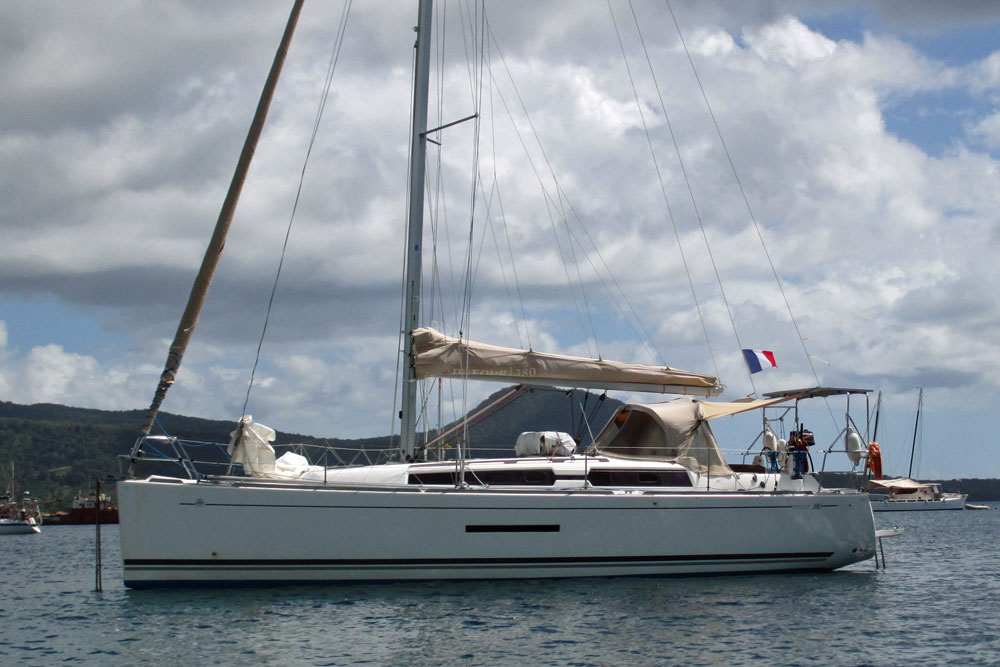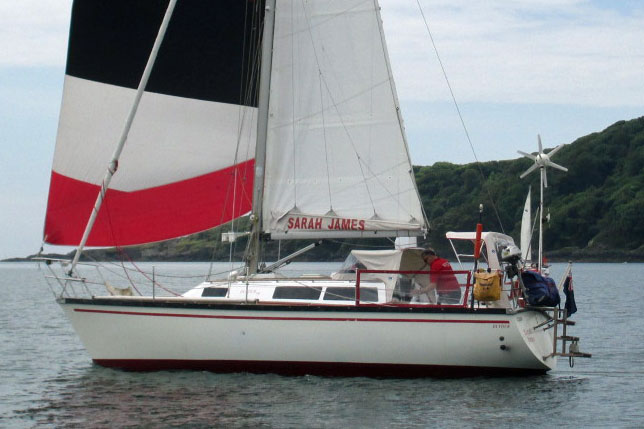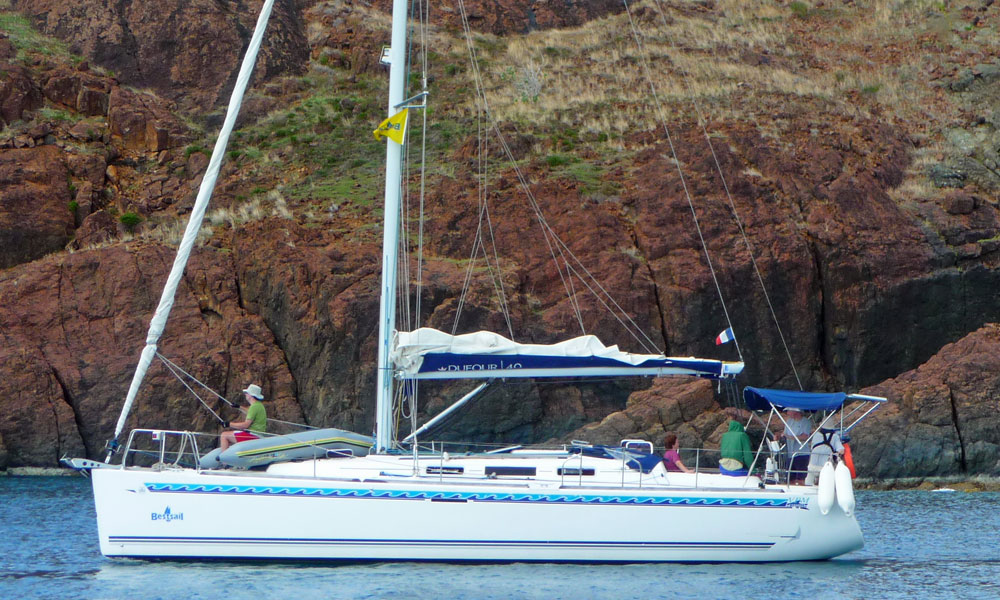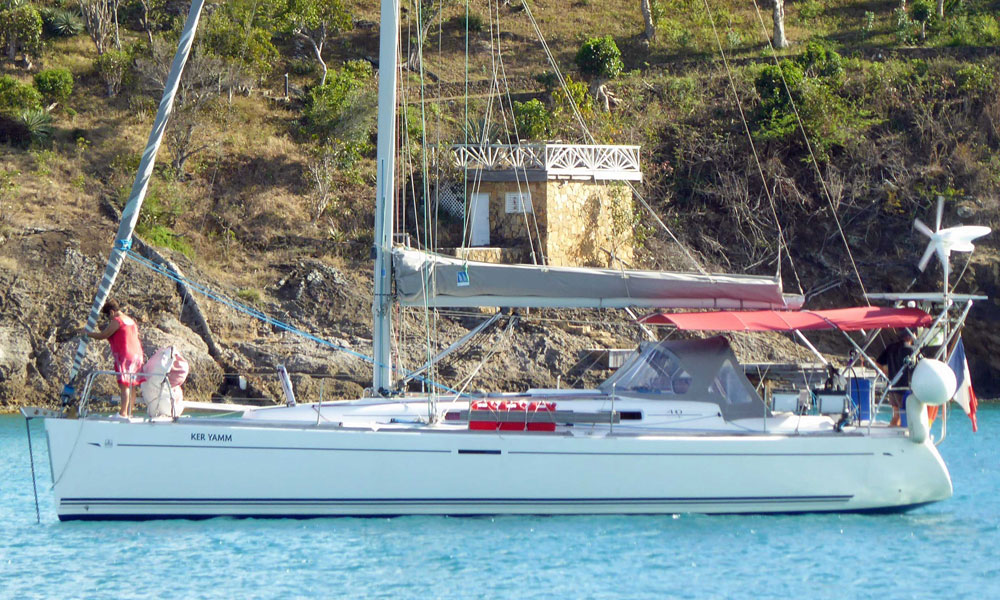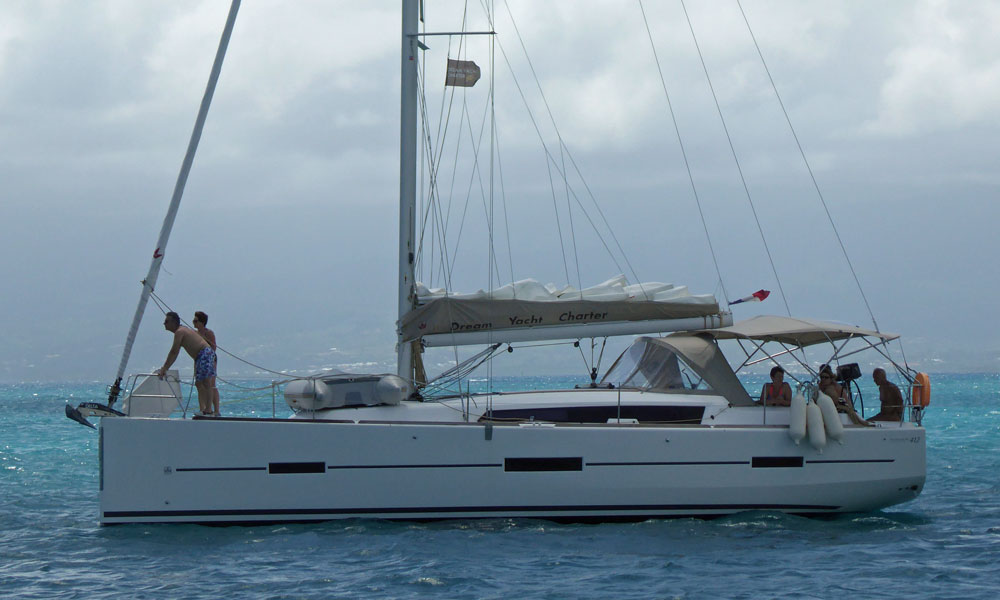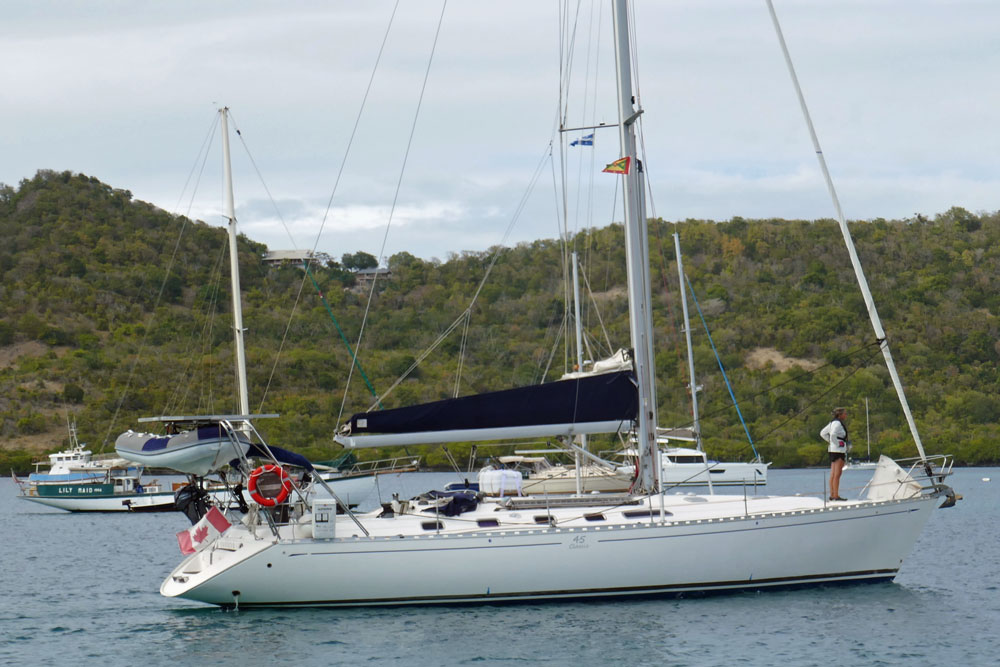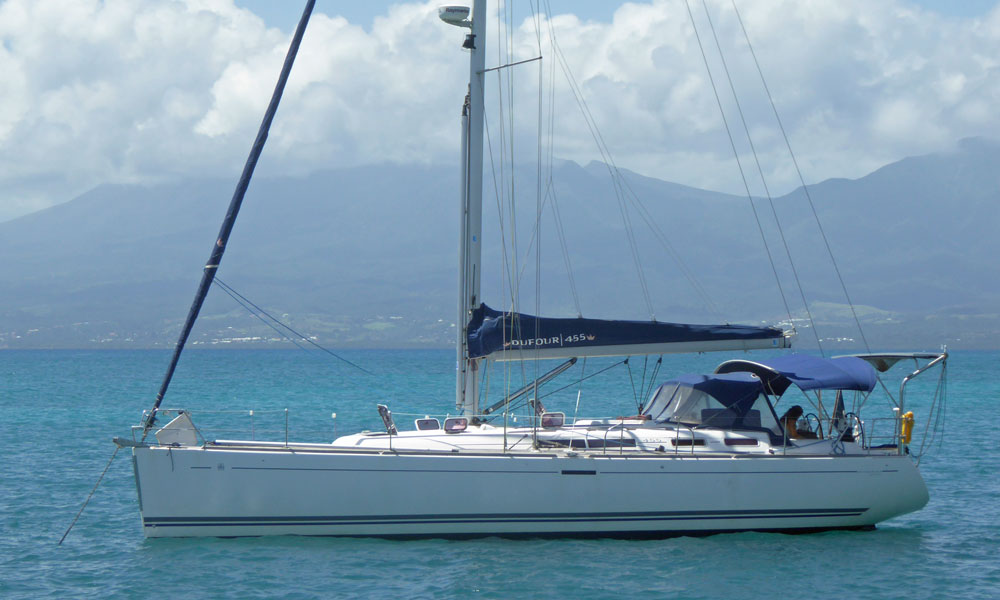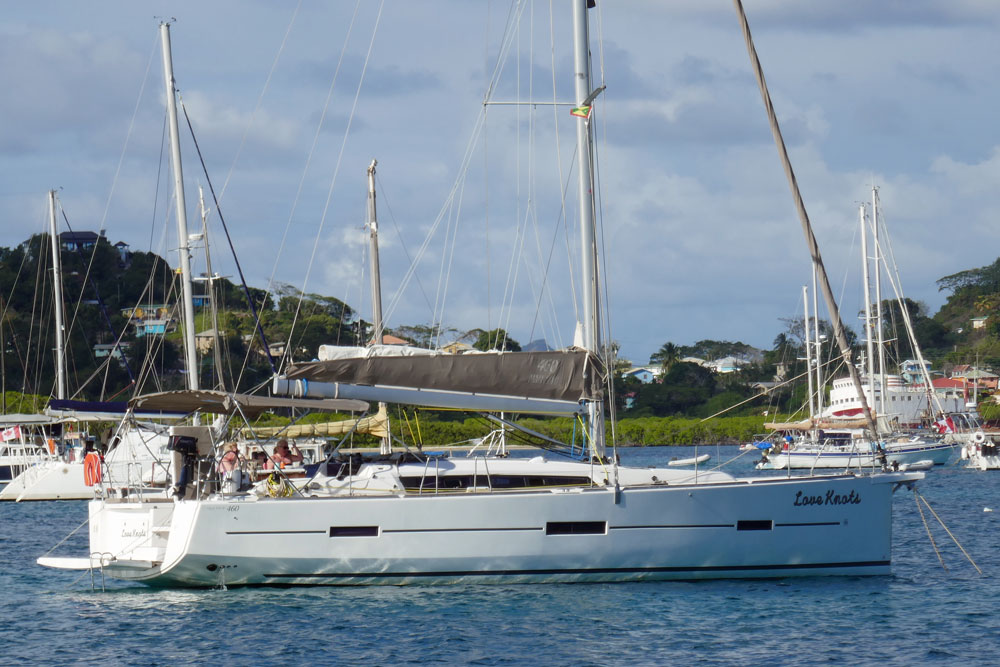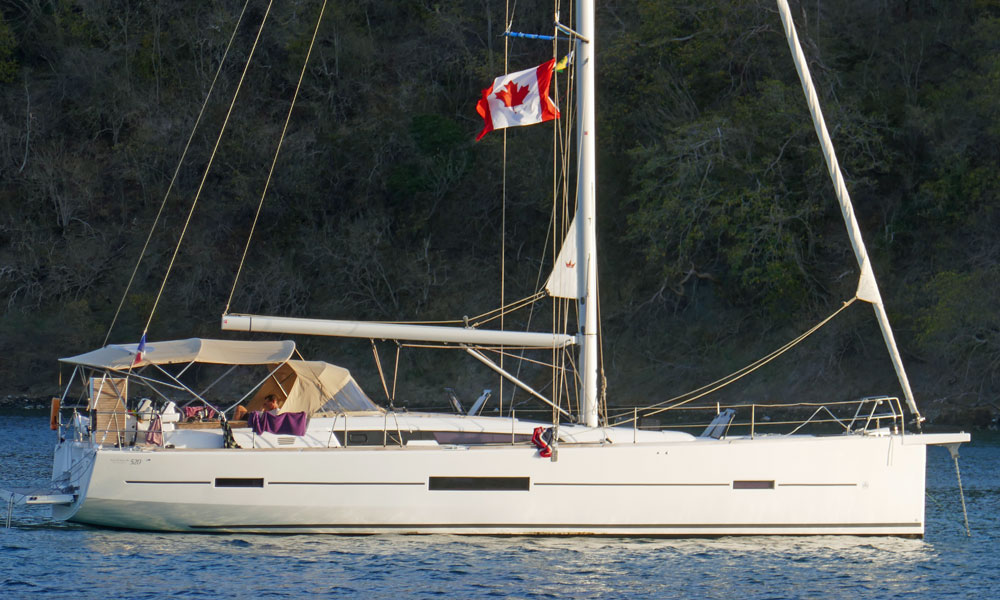- Home
- Cruising Yachts 35' to 40'
- Dufour 380
The Dufour 380 Sailboat
The Dufour 380, a fractional sloop, was designed by Umberto Felci & Patrick Roséo and built in France by Dufour Yachts.
Published Specification for the Dufour 380
Underwater Profile: Bulb fin keel & spade rudder
Hull Material: GRP (Fiberglass)
Length Overall: 39'0" (11.9m)
Waterline Length: 32'5" (9.9m)
Beam: 12'9" (3.9m)
Draft: 6'3" (1.9m)
Rig Type: Fractional sloop
Displacement: 15,564lb (7,060kg)
Designer: Umberto Felci & Patrick Roséo
Builder: Dufour (France)
Year First Built: 2011
Owners Association: Dufour Owners Association
Published Design Ratios for the Dufour 380
1. Sail Area/Displacement Ratio: 14.7
2. Ballast/Displacement Ratio: 27.6
3. Displacement/Length Ratio: 203
4. Comfort Ratio: 23.9
5. Capsize Screening Formula: 2.0
Summary Analysis of the Design Ratios for the Dufour 380
1. A Sail Area/Displacement Ratio of just 14.7 suggests that the Dufour 380 will need a stiff breeze to get her going. In light conditions, unless you've got plenty of time on your hands, motor-sailing may be the way to go.
2. A Ballast/Displacement Ratio of 27.6 means that a sailboat like the Dufour 380 (which doesn't have a stiffness-enhancing bulb keel), is likely to benefit from being reefed early to keep her sailing upright in a moderate breeze.
3. A Displacement/Length Ratio of 203, tells us the Dufour 380 is a moderate displacement cruiser, which means she'll carry all your cruising gear without it having a dramatic effect on her performance. Most of today's sailboats intended for offshore cruising fall into this displacement category.
4. Ted Brewer's Comfort Ratio of 23.9 suggests that crew comfort of a Dufour 380 in a seaway is similar to what you would associate with the motion of a coastal cruiser with moderate stability, which is not encouraging news for anyone prone to seasickness.
5. The Capsize Screening Formula (CSF) of 2.0 indicates that a Dufour 380 would not be the wisest choice of sailboat for ocean passage-making owing to the lower resistance to capsize in strong winds and heavy seas that is associated with sailboats with a CSF of 2.0 and above.
More about the Dufour 380...
The Dufour 380 is a 39-foot sailboat that was first built in 2011. It is part of the Grand Large range of Dufour Yachts, which are designed for cruising and living aboard. The Dufour 380 has a bulb fin keel and a spade rudder, and it is steered by a single wheel in the aft cockpit. The mast is deck-stepped and the rig is a fractional sloop with swept-back spreaders.
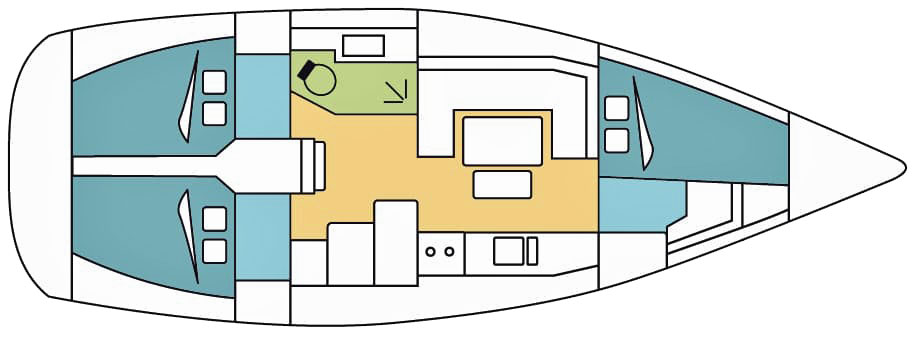 Dufour 380 Grand Large Accommodation Plan
Dufour 380 Grand Large Accommodation PlanAccommodation
The Dufour 380 can accommodate up to eight people in three separate cabins and the saloon. The owner's cabin is located in the bow, and it has a double berth, storage lockers and shelves, and an ensuite head with shower.
The two aft cabins have double berths, storage lockers and shelves, and share a head with shower located on the port side of the saloon.
The saloon has a U-shaped dinette on the port side, which can be converted into a double berth if needed.
The galley is located on the starboard side of the companionway, and it has a two-burner stove with oven, a top-loading refrigerator, a double sink with hot and cold water, and plenty of storage space for food and utensils.
The navigation station is located aft of the galley, and it has a chart table, an instrument panel and storage space.
Hull and Deck
The hull of the Dufour 380 is made of fiberglass reinforced plastic (GRP), with an inner grid structure for stiffness and strength. The deck is also made of GRP, with an anti-slip surface and teak wood on the cockpit seats and floor. The deck has a large foredeck with an anchor locker and an electric windlass, two long side decks with handrails and stanchions, and a spacious aft cockpit with a folding table, two lockers, two stern seats and a bathing platform with ladder.
The cockpit is protected by a sprayhood and a bimini top, which can be removed or folded when not needed. The cockpit also has an integrated arch for mounting solar panels or other equipment.
The deck has six mooring cleats, four winches (two for halyards and two for sheets), two genoa tracks with cars, two mainsheet tracks with cars, one traveler track with car, one boom vang, one backstay adjuster, one spinnaker pole (optional), one bowsprit (optional), one asymmetric spinnaker (optional), one roller furling genoa (standard), one fully battened mainsail with lazy jacks and stack pack (standard), one self-tacking jib (optional), one code zero (optional) and one gennaker (optional).
Other Versions
The Dufour 380 is available in two versions: the standard version and the performance version. The performance version has some differences from the standard version, such as:
- A deeper keel (6'11" instead of 6'3");
- A taller mast (54'9" instead of 52'6");
- A larger sail area (807 square feet instead of 699 square feet);
- A different interior layout, with two cabins and one head instead of three cabins and two heads.
The performance version is designed for sailors who want more speed and excitement, while the standard version is designed for sailors who want more comfort and space.
This article was written with the assistance of Gemini, a large language model developed by Google. Gemini was used to gather information, summarize research findings, and provide suggestions for the content and structure of the article.
Other sailboats in the Dufour range include:
Recent Articles
-
Is Marine SSB Still Used?
Apr 15, 25 02:05 PM
You'll find the answer to this and other marine SSB-related questions right here... -
Is An SSB Marine Radio Installation Worth Having on Your Sailboat?
Apr 14, 25 02:31 PM
SSB marine radio is expensive to buy and install, but remains the bluewater sailors' favourite means of long-range communication, and here's why -
Correct VHF Radio Procedure: Your Questions Answered
Apr 14, 25 08:37 AM
Got a question about correct VHF radio procedure? Odds are you'll find your answer here...
